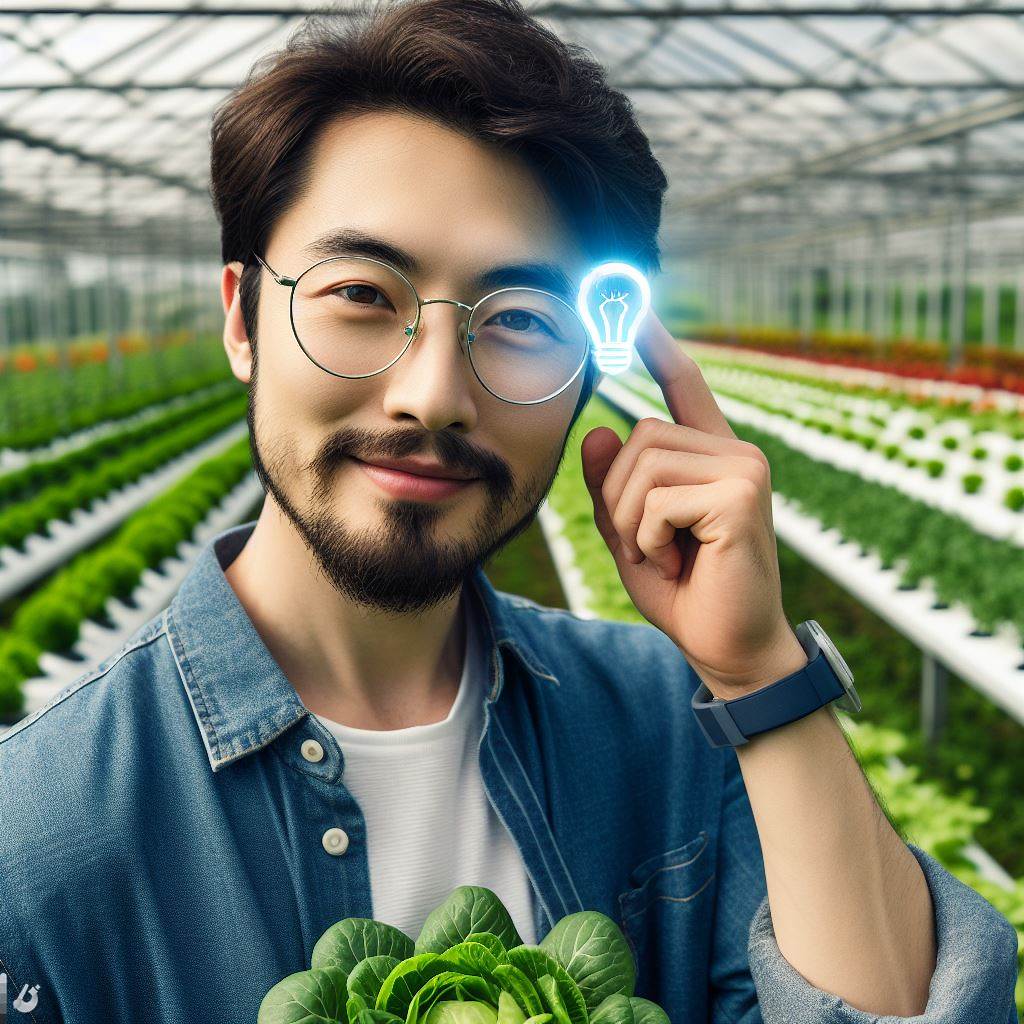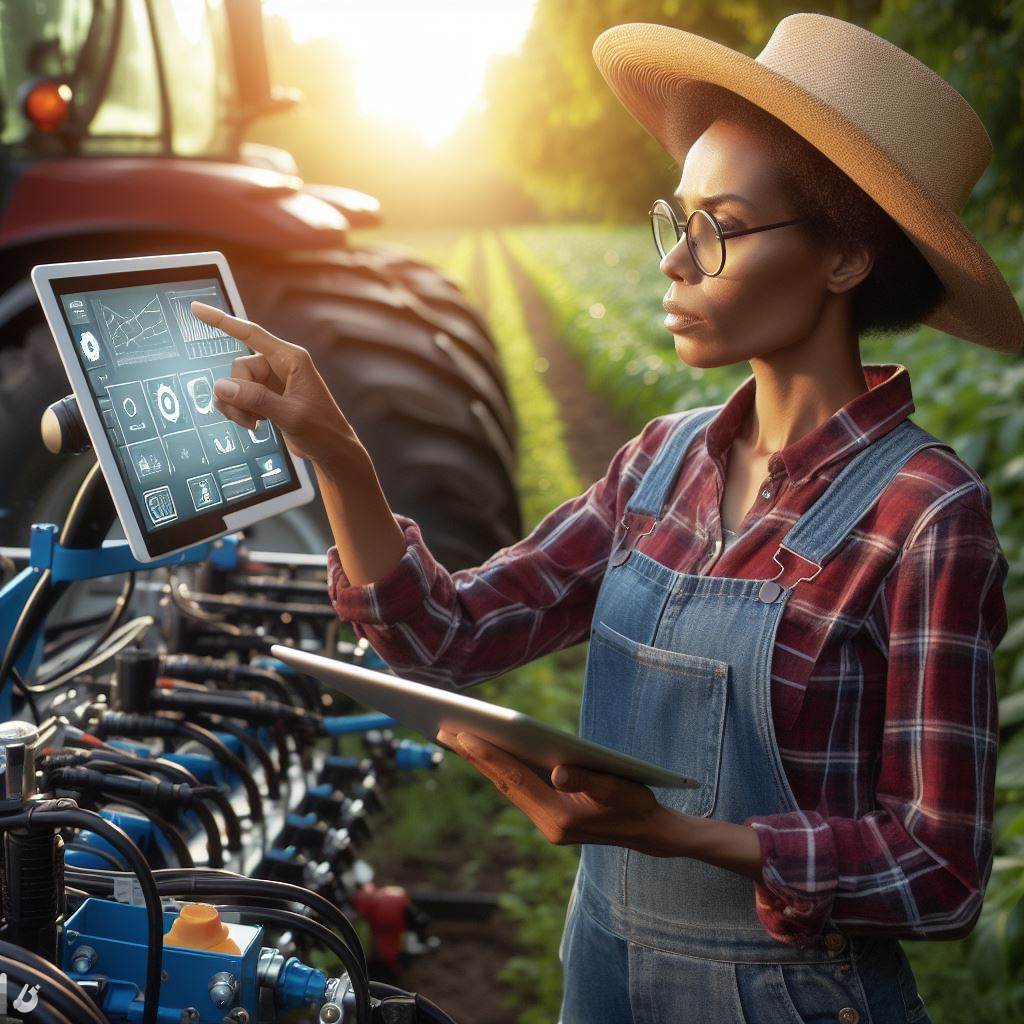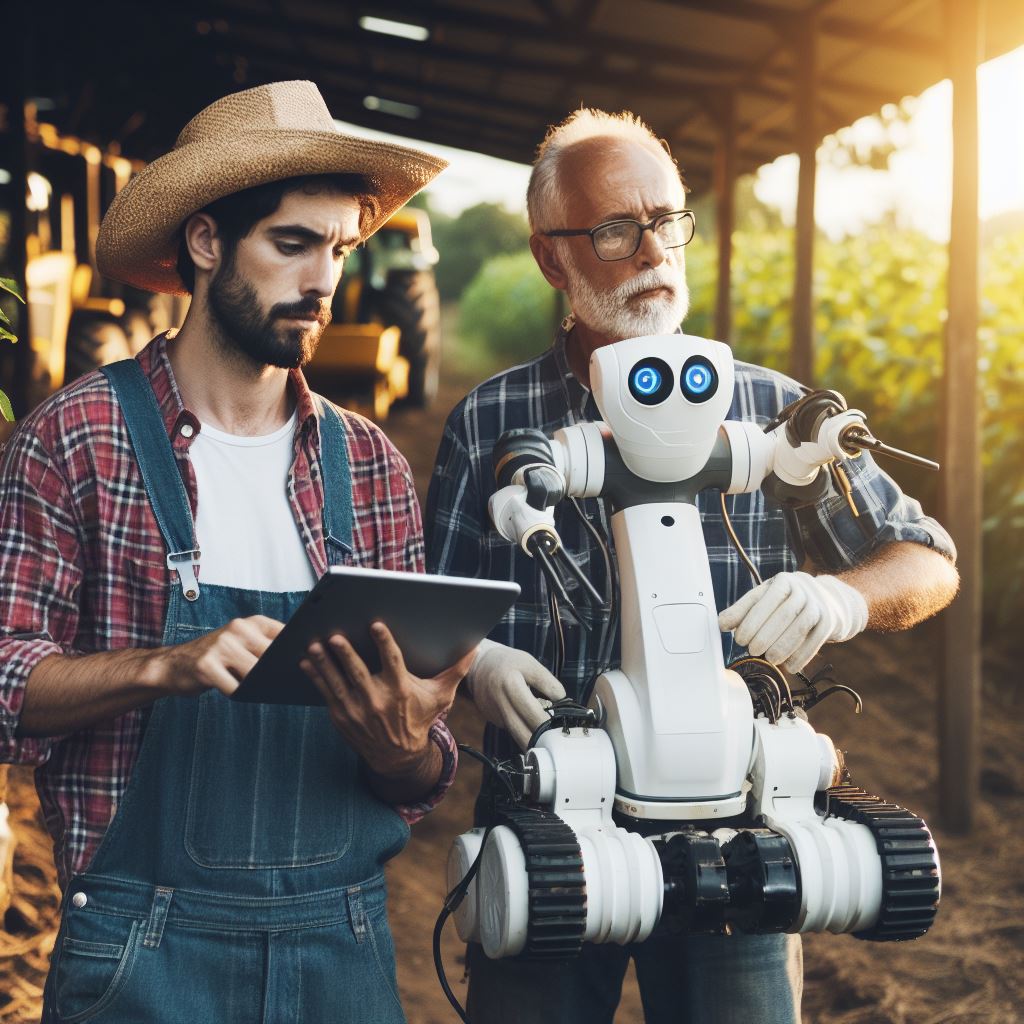Introduction
Brief explanation of smart greenhouses
Smart greenhouses are reinventing agriculture by leveraging technology to create optimized, controlled growing environments for plants.
As global populations grow and environmental stresses increase, innovating food production is critical.
This article will explore the game-changing technologies powering modern smart greenhouses.
Greenhouses provide controlled environments sheltered from external elements like weather, pests and disease.
Smart greenhouses take control and efficiency to the next level through technologies like automation, hydroponics, LED lighting and intelligent monitoring systems.
By enabling year-round tailored growing conditions, smart greenhouses can achieve substantially higher yields compared to conventional farming.
Controlled variables like temperature, humidity, lighting, irrigation and nutrition levels allow growers to maximize plant health and productivity.
Importance of technology in agriculture
Emerging technologies are making greenhouses smarter and more sustainable.
Artificial intelligence and the internet of things enable real-time tracking and response to plant needs. Renewable energy integration reduces environmental impact.
Automated systems reduce labor requirements.
The agricultural industry is embracing innovation to feed a growing world population efficiently.
Smart greenhouses are at the leading edge of this agricultural revolution.
The technologies powering them deliver unprecedented control over crop cultivation while using fewer resources.
This article will provide an in-depth look at the breakthrough technologies transforming modern greenhouses into precisely tuned and highly productive indoor farms.
Benefits of Smart Greenhouses
In this section, we will explore the benefits of smart greenhouses and how they contribute to increased crop production and yield, extended growing seasons, and improved crop quality and health.
Transform Your Agribusiness
Unlock your farm's potential with expert advice tailored to your needs. Get actionable steps that drive real results.
Get StartedIncreased crop production and yield
Controlled climate conditions
Smart greenhouses allow farmers to have precise control over the climate conditions inside the greenhouse.
They can adjust temperature, humidity, and light levels to create the ideal environment for different types of crops.
This control leads to optimal growth and increased crop productivity.
Optimized resource utilization
By using advanced technologies such as sensors, automation systems, and data analytics, smart greenhouses enable efficient use of resources.
Water usage can be monitored and adjusted based on plant needs, reducing waste.
Energy can also be optimized, lowering costs and minimizing environmental impact.
Extended growing seasons
Protection from extreme weather conditions
Smart greenhouses shield crops from extreme weather events such as storms, hail, frost, or excessive heat.
With enhanced control over temperature and humidity, crops can be grown year-round without the risk of damage from adverse weather conditions.
Year-round cultivation
Traditional greenhouses are limited by seasonal changes, making it challenging to grow crops during certain times of the year.
Smart greenhouses, however, overcome this limitation by providing a stable and controlled environment, allowing farmers to cultivate crops throughout the year.
Improved crop quality and health
Reduced pest and disease occurrence
Smart greenhouses incorporate advanced monitoring systems that detect and prevent pests and diseases.
By closely monitoring the greenhouse environment, potential infestations can be identified early, allowing for swift and targeted treatment.
This results in healthier crops and reduces the need for chemical pesticides.
Enhanced monitoring and control systems
Smart greenhouses employ various technologies to continuously monitor and analyze crop conditions.
This data-driven approach allows farmers to identify issues and make informed decisions promptly.
Monitoring systems may include sensors for temperature, humidity, CO2 levels, and even individual plant health, providing valuable insights for optimized crop management.
Essentially, smart greenhouses offer numerous benefits to farmers, including increased crop production and yield, extended growing seasons, and improved crop quality and health.
By harnessing advanced technologies and automation, smart greenhouses optimize resource utilization and create an ideal environment for plants to thrive.
With the ability to control climate conditions and protect crops from extreme weather events, farmers can achieve year-round cultivation and overcome the limitations of traditional greenhouses.
Furthermore, by utilizing enhanced monitoring and control systems, smart greenhouses enable proactive pest and disease management, leading to healthier crops and reduced reliance on chemical interventions.
Overall, smart greenhouses represent a significant advancement in agriculture, revolutionizing the way we grow crops and ensuring food production is more efficient, sustainable, and resilient.
Read: Hydroponics 101: Basics & Benefits
Technologies Used in Smart Greenhouses
Smart greenhouses rely on various cutting-edge technologies to create optimal growing environments for crops.
These technologies play a crucial role in maintaining ideal climate conditions, providing sufficient water and nutrients, analyzing data, and managing energy efficiently.
Showcase Your Farming Business
Publish your professional farming services profile on our blog for a one-time fee of $200 and reach a dedicated audience of farmers and agribusiness owners.
Publish Your ProfileClimate control system
One of the key components of a smart greenhouse is its climate control system.
By using automated temperature and humidity regulation, smart greenhouses ensure that plants receive the perfect growing conditions.
Sensors monitor the environmental factors, such as temperature and humidity, and actuators adjust them accordingly.
Proper ventilation and air circulation mechanisms prevent the formation of hotspots and guarantee uniform conditions throughout the greenhouse.
Irrigation and nutrient delivery systems
Irrigation and nutrient delivery systems in smart greenhouses are designed for precision.
These systems deliver water and nutrients exactly when and where they are needed.
Precision watering and fertilization minimize waste and optimize plant growth.
Nutrient monitoring sensors constantly measure nutrient levels in the soil, allowing adjustments to be made based on real-time data.
This ensures that plants receive the right balance of nutrients for optimal health and productivity.
Sensor networks and data analytics
Sensor networks and data analytics are integral to the functioning of smart greenhouses.
Sensors placed strategically throughout the greenhouse continuously monitor environmental parameters like temperature, humidity, light levels, and CO2 levels.
The collected data is then analyzed in real-time using advanced analytics algorithms.
This analysis assists growers in making well-informed decisions regarding irrigation, climatic conditions, and overall crop management.
Energy management and efficiency
Energy management and efficiency are vital considerations for smart greenhouses.
Integration of solar panels and other renewable energy sources allows these facilities to reduce their reliance on traditional energy grids.
Solar panels capture and convert sunlight into electricity, powering various systems within the greenhouse.
Additionally, energy-saving technologies optimize energy usage by intelligently controlling processes like lighting, heating, and ventilation.
Automation further aids in maximizing energy efficiency by only activating systems when necessary, based on sensor data.
In general, smart greenhouses utilize a range of technologies to create optimal growing conditions and maximize efficiency.
Climate control systems regulate temperature and humidity, while irrigation and nutrient delivery systems ensure precise watering and fertilization.
Sensor networks continuously monitor environmental parameters, and data analytics enable real-time decision-making.
Lastly, energy management systems integrate renewable energy sources and employ energy-saving technologies, contributing to sustainable and efficient greenhouse operations.
Read: Top 5 Trends in Vertical Farming Tech
Examples of Smart Greenhouse Technologies
Smart greenhouse technologies have revolutionized the way we approach agriculture by integrating advanced automation, connectivity, and analytics.
These technologies have improved the efficiency, productivity, and sustainability of greenhouse operations.
Automated greenhouse control software
A key example of smart greenhouse technology is automated greenhouse control software.
This software offers remote monitoring and control capabilities, allowing greenhouse owners and operators to manage their facilities effectively.
With this software, they can monitor and adjust various environmental parameters like temperature, humidity, and lighting to create the ideal conditions for plant growth.
Moreover, automated greenhouse control software provides integration with mobile applications.
This integration allows users to access and control their greenhouse operations from anywhere using their smartphones or tablets.
They can receive real-time notifications and alerts, monitor sensor data, and adjust settings, making greenhouse management more accessible and convenient.
Internet of Things (IoT)-based systems
Another example of smart greenhouse technology is IoT-based systems.
These systems utilize the power of the Internet of Things to enhance the connectivity and data exchange within greenhouses.
By connecting sensors throughout the greenhouse, these systems can collect and transmit data on various environmental factors, such as temperature, humidity, soil moisture, and light intensity.
Furthermore, IoT-based systems leverage cloud-based analytics and automation to process and analyze the collected data.
This enables greenhouse operators to gain valuable insights into their operations and make data-driven decisions.
They can optimize resource allocation, adjust environmental conditions, and automate tasks, resulting in improved efficiency, reduced costs, and increased crop yields.
Robotics and automation
Robotics and automation are also integral components of smart greenhouses.
Harvesting and plant care robots have been developed to assist in labor-intensive tasks, such as picking and pruning.
These robots can work tirelessly and precisely, ensuring efficient and consistent crop management.
Showcase Your Farming Business
Publish your professional farming services profile on our blog for a one-time fee of $200 and reach a dedicated audience of farmers and agribusiness owners.
Publish Your ProfileThey help reduce manual labor, increase operational speed, and enhance overall productivity.
Autonomous greenhouse operations take automation to the next level.
These systems can perform multiple tasks, such as environmental control, irrigation, and nutrient delivery, without human intervention.
They rely on advanced sensors, data analysis, and machine learning algorithms to make informed decisions and optimize greenhouse operations.
By reducing human error and minimizing resource wastage, autonomous greenhouse operations ensure efficient and sustainable cultivation.
In essence, smart greenhouse technologies offer a range of innovative solutions to enhance agriculture practices.
With automated greenhouse control software, IoT-based systems, and robotics and automation, greenhouse operators can achieve increased productivity, streamlined operations, and sustainable cultivation.
Embracing these technologies is essential for the future of agriculture and global food security.
Read: Soil Health Monitoring: New Tech Trends

Challenges and Considerations
Initial investment and cost implications
- Smart greenhouses require a significant initial investment to set up and install.
- The cost implications include the purchase of sensors, control systems, and other technological components.
- Farmers must carefully consider their budget and financial feasibility before adopting smart greenhouse technology.
- They should also calculate the expected returns and payback period to determine the profitability of this investment.
- While smart greenhouses can lead to higher crop yields and reduced operational costs in the long run, the initial expenses can be a barrier.
Technical expertise and training required
- Operating smart greenhouses requires a certain level of technical expertise and specialized knowledge.
- Farmers and greenhouse managers must receive proper training to understand the functionality of the technology.
- They need to familiarize themselves with the various sensors, automated systems, and software used in smart greenhouse operations.
- Technical expertise is crucial to troubleshoot any issues or glitches that may arise in the system.
- Moreover, continuous learning and staying updated with the latest advancements is important to optimize the technology’s benefits.
Maintenance and system reliability issues
- Smart greenhouses require regular maintenance and monitoring to ensure their smooth operation.
- Malfunctions in the sensors or control systems can occur, impacting the overall functionality of the greenhouse.
- Proper maintenance practices must be implemented to prevent equipment failures and downtime.
- Regular calibration of sensors, inspection of automated systems, and prompt repairs are essential for system reliability.
- Farmers should have a dedicated team or reliable service provider to handle maintenance requirements effectively.
Cybersecurity and data protection concerns
- As smart greenhouses rely heavily on technology and data collection, cybersecurity becomes a significant concern.
- Unauthorized access to the system can lead to digital sabotage or data breaches, compromising the greenhouse operations.
- Farmers must implement robust cybersecurity measures to protect sensitive data and prevent malicious activities.
- Secure network connections, strong passwords, and regular software updates are some security practices to follow.
- Data protection regulations and compliance must be adhered to in order to maintain the privacy of collected data.
In a nutshell, while the concept of smart greenhouses brings numerous benefits, several challenges and considerations need to be addressed.
The initial investment and cost implications can be a barrier for farmers, requiring careful financial planning.
Technical expertise and training are essential to operate and optimize smart greenhouse technology effectively.
Maintenance and system reliability are important for smooth operations, and cybersecurity measures must be implemented to protect data and prevent unauthorized access.
By addressing these challenges and considering all factors, farmers can harness the full potential of smart greenhouses to revolutionize their agricultural practices.
Read: Sustainable Farming via Tech Innovations
Conclusion
Recap of the benefits and advancements of smart greenhouses
Smart greenhouses powered by technology are revolutionizing agriculture and enabling highly efficient plant growth.
As we have seen, innovations like intelligent control systems, LED lighting, hydroponics and automation are optimizing greenhouse environments.
These advances are driving substantial increases in crop yields while using fewer resources.
By leveraging technologies like AI and IoT sensors, smart greenhouses can precisely monitor and modify growth conditions in real-time.
Automated systems streamline monitoring and maintenance tasks allowing growers to focus on maximizing production.
Hydroponics enables faster growth with up to 90% less water usage compared to conventional farming.
Future potential and role of technology in agriculture
The future of agriculture will be defined by technology-driven efficiency and sustainability.
Smart greenhouses have vast potential to address food security challenges as the global population grows.
They can help meet rising food demands by increasing yields year-round even in harsh climates and urban environments.
The innovations covered highlight how emerging technologies can create optimal, controlled growing environments.
Smart greenhouses are the future of efficient, sustainable food production.
They enable growers to maximize yields while minimizing environmental impact.
Encouragement for farmers to explore smart greenhouse options
Farmers should strongly consider leveraging smart greenhouse infrastructure to enhance productivity and benefit from these game-changing agricultural advancements.
With the world needing to produce more food sustainably, the controlled growing environments enabled by smart greenhouses present an important opportunity.
By embracing agricultural technology, farmers can help lead the way in feeding billions more people.




